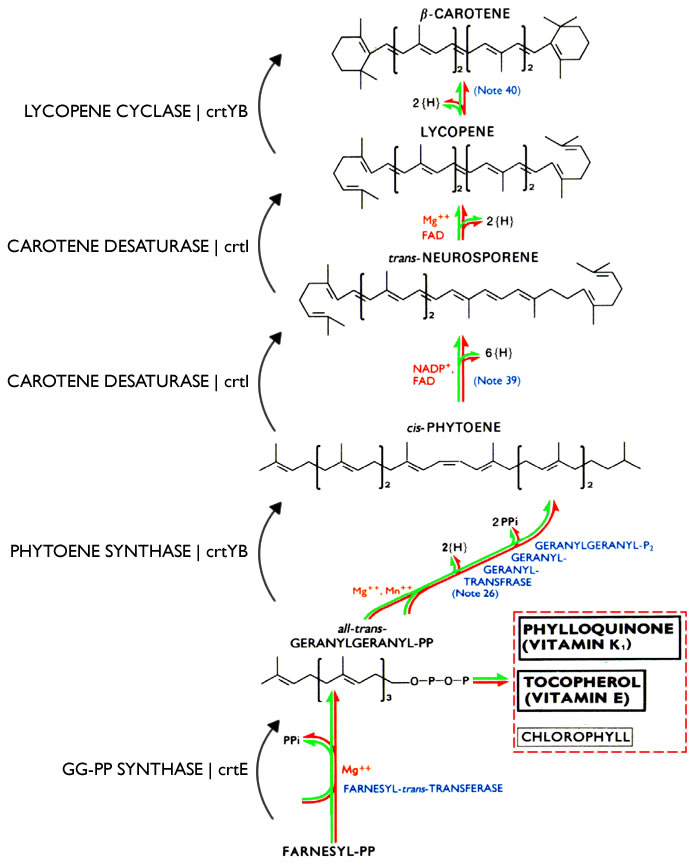Vitamin A
beta-Carotene (Vitamin A) and other carotenoids are present in many plants and share a common metabolic precursor with critical compounds including chlorophyll, tocopherol (Vitamin E), phylloquinone (Vitamin K1), squalene, and other sterols. Humans cannot naturally produce beta-Carotene, but require it for color vision.
Pathway
The Vitamin A production pathway template integrated into Saccharomyces cerevisiae was obtained from another strain of beta-Carotene-producing yeast, Xanthophyllomyces dendrorhous. S. cerevisiae has endogenous machinery to produce farnesyl diphosphate, but the rest of the pathway must be engineered. The missing caretenogenic genes included carotene desaturase, GGPP synthase, phytoene synthase. The pathway for Vitamin A production is as follows:
Once the strains containing the missing genes were placed on expression cassettes, we verified beta-Carotene production using HPLC analysis. To make sure that the cells were indeed producing beta-Carotene, we tested its efficiency on a watered-down combination of dough, our intended final substrate, and agar. We characterized the yeast's beta-Carotene absorption over time on both YPD and dough media plates to observe the effects of substrate change on the beta-Carotene yield from the cells.
Sauer, M., Branduardi, P., Valli, M., & Porro, D. (2004). Production of L-ascorbic acid by metabolically engineered Saccharomyces cerevisiae and Zygosaccharomyces bailii. Applied and environmental microbiology, 70(10), 6086-91. doi: 10.1128/AEM.70.10.6086-6091.2004.
 "
"



